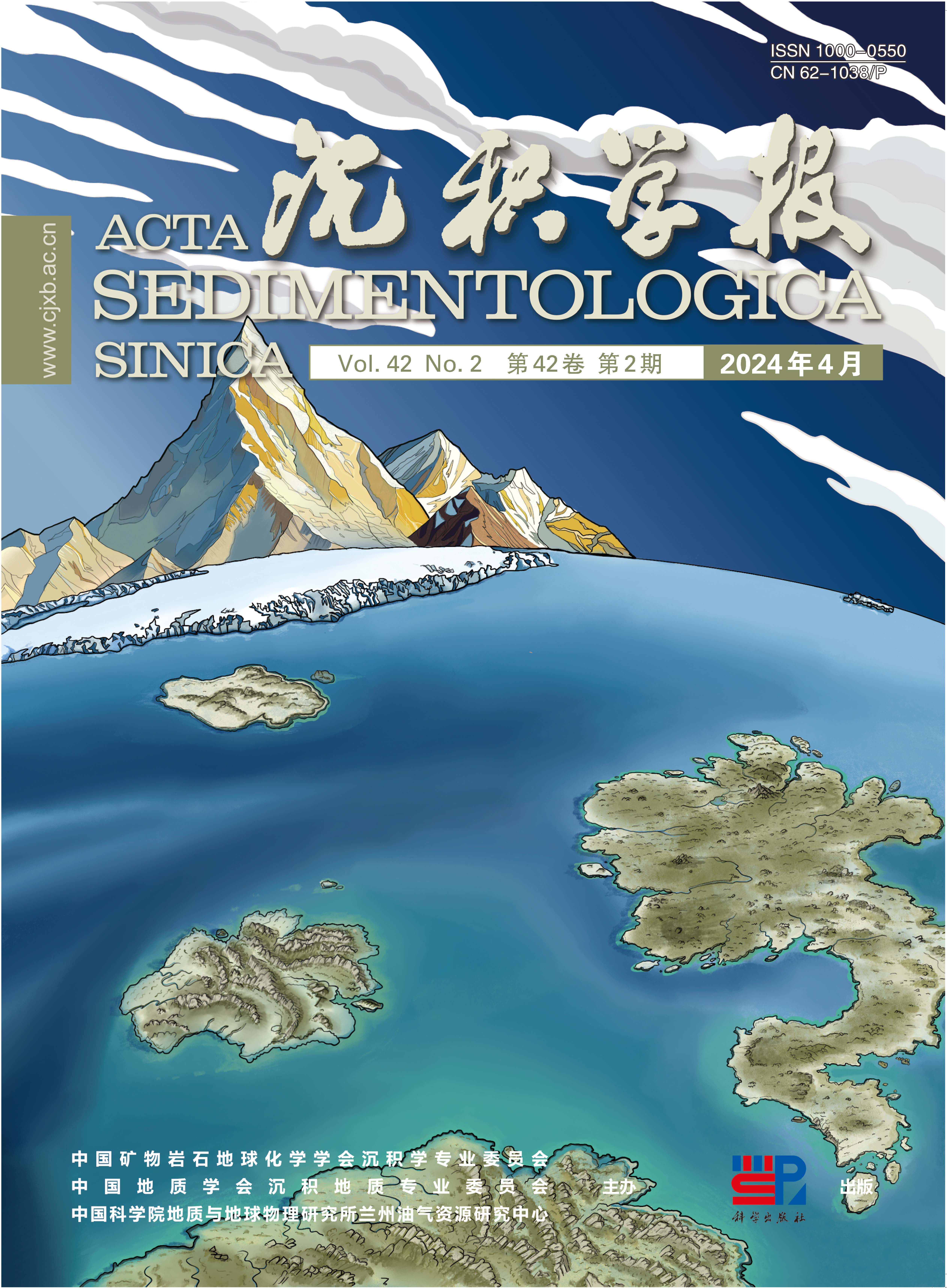HTML
-
碳酸盐生产系统是“地球关键带”的重要组成部分,维系着全球25%以上海洋生物的生命活动,也是地球环境演化过程的忠实记录者。在当代全球碳循环中,碳酸盐的沉积及再循环过程扮演着重要角色。因此,深入认识碳酸盐生产系统,对研究全球大气、生物与海洋圈层协同演化,以及认识过去和预测将来全球气候、环境变化等方面极为关键。
碳酸盐岩主要由方解石和白云石矿物构成,海洋是其最主要的沉积场所。在地球表层岩石圈中,碳酸盐岩分布面积占20%以上,蕴含着重要的水资源、油气资源,以及多金属矿产资源。同时,由于地球多圈层耦合过程的协同性和非均质性,深时地球中的碳酸盐记录表现出巨大的时空差异性。因此描述、概括和解译这些特征鲜明、类型繁多的碳酸盐岩,极具挑战性[1]。
碳酸盐岩沉积学的发展,起步于碳酸盐岩结构的识别和岩石分类命名。随着岩石微相的精细化描述、沉积构造的流体动力学过程解译、现代碳酸盐沉积调查的全面开展,以及对古代碳酸盐岩沉积相模式的构建和表征等方面蓬勃发展,在20世纪下半叶碳酸盐岩沉积学研究迎来了一个高潮[2]。随着沉积材料和数据的不断积累以及认识的不断深入,21世纪初碳酸盐岩沉积学研究重心明显向沉积物生产过程及其调控因素方面转移,更加重视碳酸盐沉积物是如何生产的(即碳酸盐生产工厂研究)。特别是对生产(指碳酸盐沉积物的来源及调控因素)工厂有了较为清晰的定义后,工厂研究逐步成为碳酸盐岩沉积学领域的重要发展方向。在此背景下,“深时碳酸盐工厂与资源环境效应”专栏通过邀请该领域的研究学者,从碳酸盐生产工厂概念体系、定量评价方法、特异性(细分)类型、实例研究等角度分别进行了介绍,共收录文章8篇(含本篇),旨在推动我国碳酸盐岩沉积学研究在该领域的发展和创新。
-
作为沉积物大量生产的场所——“工厂(factory)”一词常见于沉积地质学的多个领域,如源—汇体系中碎屑物的产生和搬运[3]以及自生黏土矿物的形成等[4]。其中概念清晰、分类明确又较为系统的当属碳酸盐岩沉积学领域的“碳酸盐(生产)工厂(carbonate factory)”。
“碳酸盐生产工厂”这一术语从20世纪70年代就已经在壳牌石油公司碳酸盐沉积学实验室内部使用[5]。早期采用该术语的沉积学经典文献包括Wilson[6]的Carbonate Facies in Geologic History、James[7]的Facies Models、Walker[8]的Facies Models(第二版),以及Tucker et al.[9]的Carbonate Sedimentology,等等。这些著作,显然无法回避“碳酸盐沉积物”的来源问题。
Wilson[6]在其经典著作Carbonate Facies in Geologic History的第一章“碳酸盐沉积作用原理”介绍完碳酸盐沉积作用必需的海洋环境条件后,总结道“生物类型、海平面变化、构造沉降速率、水文和古气候等因素相互作用,使得该‘carbonate factory’产生了地质记录中的各种石灰岩和白云岩”。由此可见,“carbonate factory”术语的出现与台地相模式一样早。需要指出的是,该专著的中文译本《地质历史中的碳酸盐相》已将其翻译为“碳酸盐工厂”[10]。
James[7]在介绍碳酸盐岩沉积相模式时指出,温暖浅水环境最易发生碳酸盐沉淀,以热带开阔陆棚和浅滩环境最为典型;大部分“carbonate factory”生产的沉积物在原地或者附近堆积,也有部分被搬运至潟湖和潮坪环境(向陆方向),另一些则被搬运至斜坡和盆地环境(向海方向),因此碳酸盐沉积物保存场所包括浅水—深水不同环境。该文用简图标识了“潮下碳酸盐生产工厂”的位置及生产产物的搬运途径。这可能是较为完整地阐述碳酸盐生产工厂特征的最早文献[7]。尽管James[7]没有直接给出定义,但是字里行间表达出碳酸盐生产工厂的一些特征,如碳酸盐沉积物的生产与环境、水深以及生物的贡献相关。此后,“carbonate factory”一词在碳酸盐岩沉积学领域相关文献和教材中快速传播,但对其理解和应用的侧重点各有不同。例如Tucker et al.[9]指出,在巴哈马台地和佛罗里达陆棚,水深10~15 m范围内为碳酸盐沉积物生产的主要场所,这个浅水潮下带即“carbonate factory”。而Homewood[11]则强调骨屑颗粒和有机质生产的重要性,认为“carbonate factory”是由复杂和变化的、既能生产大量有机质又能产生大量碳酸盐骨屑颗粒的浅水生物群落组成,是生物、环境相互作用及反馈的结果。Betzler et al.[12]认为温度是碳酸盐工厂发育的主控因素,并且注意到不同水深、光照条件的差别对碳酸盐颗粒类型和构成的重要性。Surlyk[13]在对丹麦盆地晚白垩世温凉水碳酸盐沉积物的研究中明确了营养条件对工厂发育的影响,对不同水深条件下碳酸盐生产工厂的主要贡献者也作了较好的总结。
由此可见,自20世纪70年代“carbonate factory”概念产生直到20世纪末,在积累碳酸盐沉积成因特征资料、建立和完善碳酸盐岩沉积相模式的过程中,国际沉积学界就已经在关注、讨论碳酸盐沉积物的生产问题。特别是在碳酸盐生产工厂概念提出后,相关话题的讨论更为热烈。但是,前人在碳酸盐沉积物生产中涉及的构成要素是地点/空间(如潮下带、台地或者陆棚)、生产者(生物群落)、生产过程(如生物与环境的相互作用),还是产物方面的认识还较为模糊;在如何识别、区分(依据环境条件、控制因素,还是沉积特征)生产工厂,生产过程与沉积—成岩作用的边界在哪里,以及生产工厂如何进一步研究和持续发展等方面还未达成广泛共识。
-
针对上述情况,21世纪初Schlager对碳酸盐生产工厂的理论体系进行了系统探索,推动了碳酸盐生产工厂研究的规范和发展[14⁃16]。碳酸盐沉积物的生产对环境条件极为敏感,因而海洋环境中碳酸盐沉积物的生产区域是有边界的(narrowly constrained in space)。区域间生物与环境相互作用的细微差别,也会导致其产物在区域之间的变化。因此,碳酸盐生产工厂就是碳酸盐沉积物生产系统,核心是生产,典型构成要素是生产空间和生产过程[15]。
借鉴碳酸盐沉积物的基本生产方式,Schlager[14⁃15]先将海相碳酸盐沉积物分为生物成因和(准)非生物成因两类,再依据生物矿化方式的差别将生物成因类细分为生物控制成因和生物诱导成因两种。其中的生物控制成因沉积物又根据导致矿化的生物种类差别,进一步区分为光合自养生物型和异养生物型(图1)[14⁃15]。得益于地球生物学和海洋化学等领域的新进展,这种显微尺度上的分类有助于从根本上区分碳酸盐的生产方式,也有利于解读海相碳酸盐岩记载的地球化学信号(如同位素比值,以及微量和痕量元素含量)的沉积学含义。

Figure 1. Classification of marine carbonate factories (modified from reference [5])
需要注意的是,碳酸盐生产工厂理论应用于宏观碳酸盐沉积体研究时,涉及时空尺度不一致的问题。特别是,工厂研究聚焦到岩石地层单位组一级甚至更大尺度时,所有大的碳酸盐沉积体将会是2~3种成因方式的混合,但是这种混合并非随机的,而是会围绕3种基本碳酸盐生产系统(工厂)聚类并各具特色,分别是热带工厂、温凉水工厂和灰泥丘工厂(图1)[5,14⁃15]。
(1)热带生产工厂(tropical factory),发育于热带、亚热带地区浅海环境;生产者主要是生物控制矿化生物,以光合自养生物为特征,如光合作用藻类及其共生动物。次要特征产物包括非骨屑碳酸盐,如胶结物、鲕粒,以及细粒钙质悬浮沉积物。异养生物可以是重要的生产贡献者,但并非本工厂特有的生产者。
(2)温凉水生产工厂(cool-water factory),发育于中、高纬度地区表层海水中,以及低纬度地区上升流发育区和表层海水之下的温跃层中。生产者主要是异养生物,个别情况下光合自养生物如红藻也会起到重要作用。典型的产物为混杂堆积的砂、砾级骨屑颗粒,但缺乏造礁珊瑚碎片和鲕粒,灰泥和胶结物罕见。
(3)灰泥丘生产工厂(mud-mound factory),主要形成于较深水海洋环境,但浅水底栖环境亦可发育。与前两类工厂不同,灰泥丘生产工厂主要由微晶灰岩构成,其成因多与生物诱导碳酸盐沉淀有关;典型的灰泥丘一般为原地沉积,在同生期和准同生期即可固结保存。
此外,广海大洋表层中碳酸盐沉积物的生产可称为浮游生产工厂(planktic factory)。需要注意的是,各类工厂名称的选取,主要参考生产者的类型和形成环境[14⁃15]。为了避免歧义和涵盖更广泛的生产者和环境条件,Schlager后来将三种工厂简化为T—工厂、C—工厂和M—工厂。其中,热带生产工厂被改称为T—工厂,代表着热带(tropical)和水柱顶部(top-of-the-water-column);温凉水生产工厂被改称为C—工厂,代表着温凉水(cool water)和受控型沉淀过程(controlled precipitation);灰泥丘生产工厂被改称为M—工厂,代表着灰泥丘(mud-mount)、微晶(micrite)和微生物(microbes)[16]。
每种生产工厂各自代表了一套特定的环境参数组合、沉积物结构组分、沉积体内部构成,以及沉积体的生产潜能(相对于海平面变化、构造沉降)等。这种沉积属性的成因联系,使得确定的碳酸盐生产工厂与沉积相模式一样,有助于规范碳酸盐沉积地质体的描述,并可据此对难以直接观察到的沉积特征和沉积过程进行恢复和预测。因此,碳酸盐生产工厂类型的划分也被称为碳酸盐生产工厂模式(carbonate factory model)[5,15]。
2021年,Reijmer[5]回顾了碳酸盐生产工厂概念的早期发展历史,系统论述了全球控制因素(如光照、温度、营养条件、盐度、底质和碳酸盐饱和度)和区域控制因素(如洋流、上升流、海洋—气候系统、大气系统、水动力条件、陆源碎屑沉积物和淡水输入)对碳酸盐沉积物生产的影响。Reijmer[5]还修订、补充了Schlager[15⁃16]的碳酸盐生产工厂分类,例如增加了冷水珊瑚生产工厂(Cold-Water-Coral factory,CWC),并建议依据主控因素的差别,如光照主导型、盐度主导型和营养主导型,对Schlager三种基础碳酸盐生产工厂进行细分(图1)。一些新的碳酸盐生产工厂分类方案对Schlager原有工作也进行了较好的补充和完善[17⁃18]。相关工作的开展标志着碳酸盐生产工厂概念体系的成熟和规范。
另一方面,Pomar et al.[19⁃22]在碳酸盐生产工厂体系概念和模式方面也有很多重要认识。2022年Sedimentology杂志出版了致敬Pomar的专辑[23],其中总结了他在碳酸盐生产工厂领域的一系列重要成果,包括持续关注地中海地区中新世碳酸盐生产工厂的沉积特征和演化;从工厂角度,清晰地论述了碳酸盐沉积体系与陆源碎屑沉积体系在物源供给以及水动力条件驱动沉积物扩散方面的本质差别;提出“生态可容空间”的概念,强调生物和生态条件对碳酸盐岩台地发育的控制作用[23]。Pomar et al.[19⁃22]认为碳酸盐沉积物的生产高度依赖于生物系统和盆地内部生态条件(如温度、盐度、营养等)。而钙质生物的生产直接或间接与光合作用有关,因而Pomar[19]将碳酸盐沉积物的生产场所按照透光性的差别,依次划分为真光带(euphotic)、寡光带(oligophotic)和无光带(aphotic),并以此为依据区分生物群类型。Pomar et al.[20⁃21,24]构建的工厂体系以生物群(carbonate-producing biota)、生物组合(biotic assemblages),或者冠以特征的骨屑(如cholozoan和rhodalgal)和非骨屑颗粒(如鲕粒)组合名称为特征。在“生态可容空间”概念下,Pomar[19]认为沉积基线虽然会受到盆地水动力条件的影响,但是沉积基线主要取决于沉积物的类型和生产场所。这是因为生物作用(如粘结、障积、建造格架)和胶结作用可以强烈影响沉积物的搬运、扩散和堆积,因而在碳酸盐沉积体系中沉积基线的主要控制因素也是生物和生态环境因素[25]。碳酸盐生产生物群、生态可容空间和物理可容空间三者相互作用,造成了碳酸盐岩台地层序结构的多样性和复杂性[24⁃28]。
近年来随着正演模拟技术(forward modelling)的应用和发展,基于Pomar体系的碳酸盐生产工厂沉积过程的数值模拟研究越来越多,加深了人们对于不同碳酸盐生产者与沉积体形态之间关联性的认识[29⁃30]。此外,对碳酸盐生产工厂场所的认识,也由早期的底栖(benthic)环境慢慢扩展至沉积物—水界面(SWI)之下;生产过程也从沉积物产生、堆积阶段,延伸到早期成岩阶段[31]。早期成岩改造包括沉积颗粒从沉积到转变为深埋藏地层记录之前,在同生和准同生阶段所经历的一整套生物、化学和物理作用过程的综合。这种同生—准同生阶段形成的生产工厂也曾被称为海底碳酸盐生产工厂(seafloor carbonate factory)[32],并被James et al.[33]明确指出属于碳酸盐生产系统范畴。碳酸盐沉积物颗粒形成后的早期成岩改造也体现在碳酸盐沉积物的同沉积溶蚀和颗粒分解方面。在一些台地低能区,同沉积碳酸盐溶蚀速率可能接近碳酸盐净沉淀速率,因而被称为碳酸盐沉积体系中的“黑洞”(black hole)。由此来看,碳酸盐岩沉积学研究中的“sink”(汇)与陆源碎屑岩物源分析中的“sink”(汇)有着不同的含义[34⁃36]。同沉积溶解也会明显改变台地物质构成和沉积相空间展布样式,需要在生产工厂研究中加以重视[37]。
-
本次“深时碳酸盐工厂与资源环境效应”专栏通过碳酸盐生产工厂的定量化评价探索,多种特异性(细分)碳酸盐工厂类型和特征,以及工厂体系视角下碳酸盐沉积过程解译实例等方面,来介绍碳酸盐生产工厂的概念体系及研究进展。
由于碳酸盐生产工厂的研究重点在于生态系统与环境变化对碳酸盐生产—堆积—成岩过程的影响,因而对碳酸盐生产工厂的研究需要结合定量化的岩石学、矿物学、沉积学和地球化学指标,在数值模拟等手段加持下揭示碳酸盐岩的形成过程及主控因素。王夏等[38]从定量化重建的视角切入,总结了碳酸盐生产工厂的特征以及与生态—环境因素有关的半定量—定量表征方法,提供了利用定量化的沉积学、地球化学分析手段,结合沉积过程正演模拟精细刻画碳酸盐工厂生产过程的思路。柳晶晶等[39]利用碳酸盐颗粒定量统计学方法,分析了川西北马鞍塘组碳酸盐沉积过程中的碳酸盐颗粒组合及颗粒形态,探讨了它们所反映的沉积环境特征,并进一步分析了较短时间尺度内同一沉积序列中不同细分工厂类型、特征及相互关系,以及细分工厂相互转化的驱动因素。
碳酸盐生产工厂类型细化和特征归纳一直是工厂研究的前沿方向,其进展往往标志着研究者对于碳酸盐岩形成过程的复杂性有了愈发深入的理解。李飞等[40]详细解剖了现代海洋环境中研究程度较高的巴哈马镶边台地型鲕粒工厂及波斯湾缓坡型鲕粒工厂,认为水体能量、碳酸盐矿物饱和度,以及特殊的生物化学条件是制约鲕粒工厂发育的关键;鲕粒工厂的发育环境以及规模受到沉积背景和海平面变化的调控;基于现代碳酸盐工厂的研究可以为深时沉积过程的反演以及未来沉积过程的预测提供思路。刘超等[41]从碳循环角度出发,对传统碳酸盐生产工厂的概念体系进行了补充,提出的冷泉碳酸盐工厂特征和内涵具有前瞻性;不同于传统碳酸盐生产工厂的碳源主要来自大气—海洋中的无机碳库,冷泉碳酸盐生产工厂的碳源主要来自海底冷泉等外源碳库。王曾俊等[42]对河南云梦山剖面寒武系崮山组中微生物碳酸盐生产工厂形貌学特征进行了多尺度量化评价,通过对比现代Hamelin Pool微生物碳酸盐工厂,探讨了该类型工厂启动—繁荣—关闭的过程及调控因素,提供了一个深时特异性碳酸盐工厂研究范例。
由于碳酸盐沉积物的盆内属性,碳酸盐生产过程与台地演化的关系一直以来都是碳酸盐生产工厂领域最受关注的方向。翁晓爱等[43]从生物地层学、沉积学及碳同位素地层学的角度出发,研究了普林斯巴晚期—托阿尔(最早)期的东特提斯藏南Kioto碳酸盐岩台地生物演化特征对于碳循环扰动事件的响应,指出以碳同位素正偏为特征的margaritatus菊石带事件通过有机质的大量埋藏改善了海洋环境,促进了包括大型底栖有孔虫及造礁双壳类在内的生物繁盛;而以碳同位素负偏为特征的margaritatus-spinatum界线事件过程中海平面的下降引发了生物危机。这两次事件都影响了同时期的台地演化过程。廖慧鸿等[44]针对滇东北地区临湘组—龙马溪组展开研究,从生产力、氧化还原条件、陆源碎屑输入量及海平面变化等因素出发,探讨了晚奥陶世碳酸盐岩台地的消亡过程,认为氧化还原条件的变化抑制了碳酸盐生产过程,是台地不断萎缩以致停止生长的主要原因。
-
历经20余年的深入探索,碳酸盐生产工厂研究呈现蓬勃发展态势。我们热切希望通过本专栏的介绍,能够引起同行对碳酸盐生产过程这一话题的关注和讨论,为碳酸盐生产工厂领域国内外同行交流和新的发展方向探索提供绵薄助力。







 DownLoad:
DownLoad: